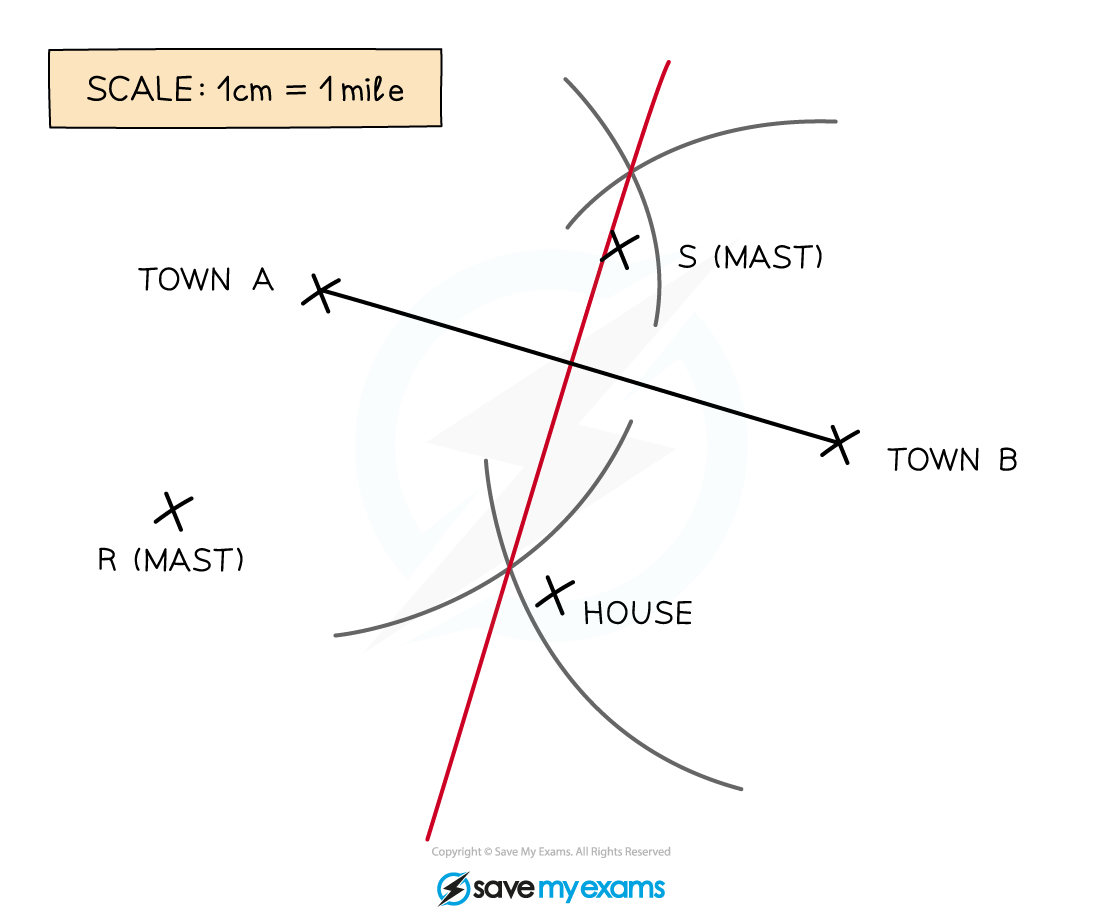Loci (WJEC GCSE Maths & Numeracy (Double Award)): Revision Note
Exam code: 3320
Loci
What are loci?
A locus (loci is plural) is a line, shape, or path that is determined by following a restriction
e.g. always being 2 m away from a point would form a circular locus
You may be asked to construct a locus, although the exam question won’t always use these words as questions are often based on real-world situations
You may be expected to use some of the constructions mentioned above
You may need to use a ruler, and a protractor or a pair of compasses
What are the common types of loci?
A fixed distance from a point
This locus will be a circle around the point
Use a pair of compasses
A fixed distance from a line
This locus will be a running track shape
A pair of parallel lines
A semi-circle at each end
Equidistant from two points
This locus will be the perpendicular bisector of the line segment connecting the two points
Equidistant from two lines
This locus will be the angle bisector of the angle between the two lines
How do I know which region to shade?
To find the region that is (or is not) within a given distance from a point
Draw a circle around that point
The radius will be the given distance
The region inside the circle is closer to the point that the given distance
The region outside the circle is further away from the point than the given distance
To find the region that is closer to point A than point B
Draw a straight line that joins A to B
Draw the perpendicular bisector of the line
The region that is closer to A is the side of the perpendicular bisector that contains A
To find the region that is closer to line AB then line AC
Draw the angle bisector at point A
This is the point where the two lines meet
The region that is closer to the AB is the side of the angle bisector that contains line AB
You might have to share the region that satisfies multiple conditions
Deal with one condition at a time
Put a tick in the region(s) that satisfy that condition
Put a cross in the region(s) that do not
Once all conditions have been dealt with, shade the region that only contains ticks and no crosses
Worked Example
On triangle ABC below, indicate the region that is closer to the side AC than the side BC.

Answer:
This question is asking for the region that is closer to one side of an angle than the other, so an angle bisector is needed
Construct the angle bisector either using a protractor and a ruler, or a pair of compasses and a ruler
Shade the region between the angle bisector (the line you have drawn) and the side AC

Worked Example
A house lies between Town A and Town B as shown on the scale diagram below.

Two masts, located at the points R and S, provide the area shown on the map with radio signals.
The house will receive its radio signal for the mast located at point R if it is either
closer to Town A than Town B,
or outside a region 5 miles from the mast at point S.
Showing your working on the diagram below, determine whether the house receives radio signals from the mast at point R or the mast at point S.
Answer:
Begin by finding the region satisfying the first condition; that the house is closer to Town A than Town B
This is found by constructing the perpendicular bisector of the line segment that joins Town A and Town B
You will need to add this line segment in yourself before starting
Construct the angle bisector either using a protractor and a ruler, or a pair of compasses and a ruler

The house is on the same side of the perpendicular bisector as Town B is
The house is closer to Town B than Town A
Now check the second condition; to see if the house is further than 5 miles from the mast at point S
To find the locus of points exactly 5 miles from point S, first consider the scale given on the scale drawing.
1 cm = 1 mile
5 cm = 5 miles
Open your set of compasses to exactly 5 cm
Being extra careful not to change the length of your compasses, put the point at S and draw a circle around S with a radius of 5 cm
You may not be able to draw the full circle, but make sure you have the part that is near the point where the house is located

The house is located outside of this region, so it is more than 5 miles from the mast at the point S
The house satisfies one of the conditions given to receive its signal from the mast at point R
The house receives its radio signal from the mast at point R.

Unlock more, it's free!
Did this page help you?